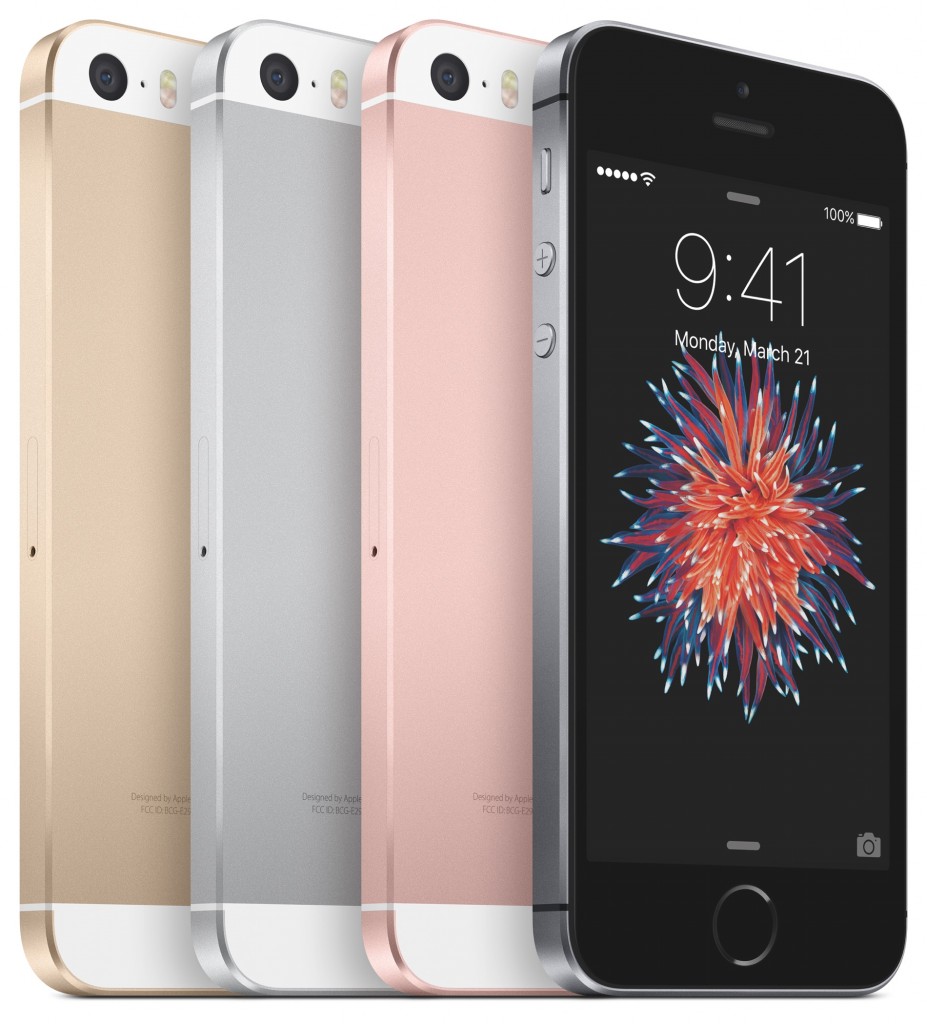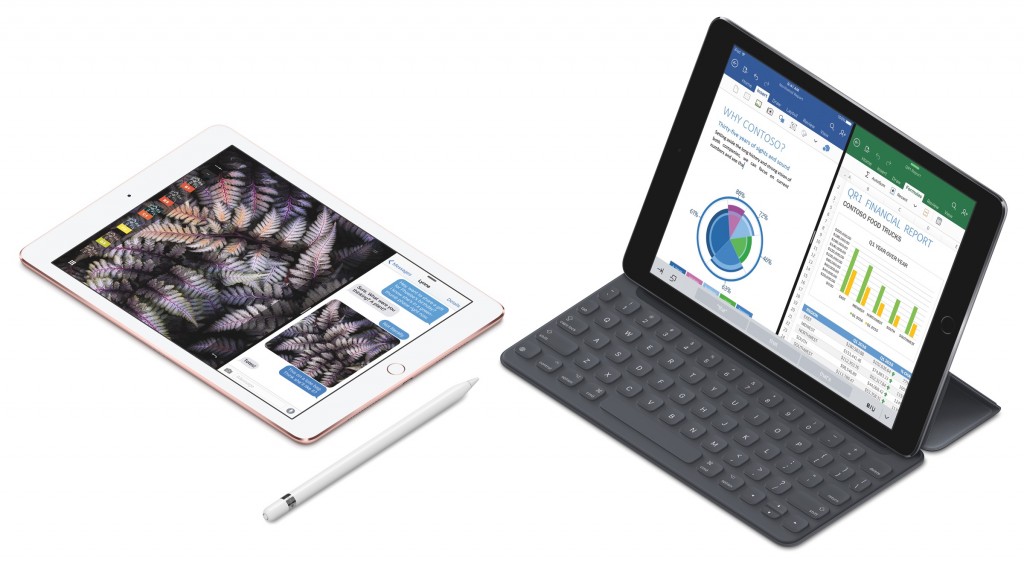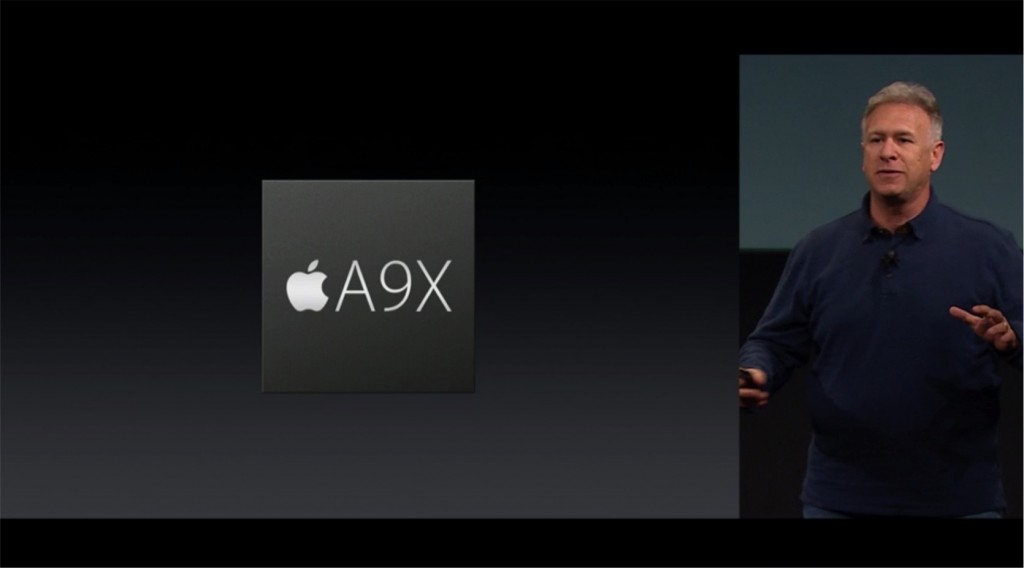There’s a reason “mobile music” has become synonymous with iOS. Apple has been unmatched in terms of how appealing they make their mobile platform to developers.
Today’s announcements are likely to be heavily covered by tech and Apple-focused sites, but we can cover the music angle pretty easily. It’s now possible to buy a new phone or tablet very cheaply with high-end performance capable of running demanding music apps. And that means the platform is likely to continue to attract both users and developers, in a continuous cycle.

An entry-level iPhone that’s just as powerful as the 6S flagship – that’s big news for developers. Photo courtesy Apple.
On the phone side, a 16GB iPhone 6SE starts at US$399, without a contract. (16GB is too small, so swap “$499” for that.) That in itself may not sound impressive, except for this: the SE has the same performance as a 6S. This is stuff that wasn’t even available in the top-of-range iPad up to fairly recently, and it now exceeds what was not so long ago laptop performance. That means that putting serious instruments and recording software on your phone is now easy to do even for the “budget” iPhone.
Think about that for a second. The “entry level” Apple iPhone now has exactly the same horsepower as the 6S flagship. And since that’s a phone Apple sells in big quantities, that means the installed user base with that horsepower will increase in a hurry. No Android maker is able to do that – and that’s even before the problems Android has with OS fragmentation and never-arriving OS updates.

Most likely, the people who were waiting to get an iPad Pro after seeing the first one where waiting for this.
The tablet side I expect is equally disruptive. The new 9.7″-display iPad Pro isn’t exactly cheap at US$599, but it is both more portable and more affordable than last year’s iPad Pro in a way that I expect will start to attract users.
I think that’s a big deal, because while the bigger iPad Pro was strictly a niche device (literally the only people I knew who bought one were iOS developers), this looks like a tablet that could be both mainstream and a primary music device.
I expect some would-be iPad Pro customers will wait for the bigger one to come down in price (and/or get the new features on the smaller model), but that’s also an inevitability.
It’s also significant that this hits the middle price range and works with a really nice pencil input device. That’s huge for anyone who works in notation: the combination of iOS with low-latency, accurate stylus input is a huge boon to songwriters, composers, and the like. A lot of us were dreaming of something like this since the very first time we laid eyes on a computer.
In other words: look out, laptop. While the laptop is likely to remain the workhorse machine for DAWs and finishing tracks, the iPad in general is growing in appeal as a powerful synthesizer, recording device, song-starter, and as a writing/theory/practice tool that can actually sit comfortably on a music stand or piano desk.
Oh, and, according to Apple’s promo video (pictured), the new iPad Pro will also let you jam by candlelight while adjusting the screen so you don’t have a blue glare. In fact, maybe solving the “blue glare” problem should itself make these things less unfriendly onstage (just in case you don’t want your face to look like it came out of a dystopian scifi movie).
Now, if you don’t need the Pencil (for scoring, in particular), the whole iPad range has in turn commoditized further. This means the baseline for performance is now higher. I expect this will mean a new generation of apps that push horsepower more than they have in the past, which can be relevant to more CPU-expensive effects and synths. And it also means you can run more apps together on one device, which is the other reason this trend may lead more people to try out production on the iPad.
The best news in the announcement today, though, you could be forgiven for missing. The iPad Pro (both models) gets an accessory that’s called this:
Lightning to USB 3 Camera Adapter
Let me translate that into English for you. It’s a
“Lightning to USB audio and MIDI accessory adapter that doesn’t drain your battery while you use it because you can finally plug in a #$*(&ing power supply at the same time”
The “Camera” adapters for iOS are some of the most useful devices on the platform, because all sorts of audio and MIDI gadgets work with them. But since they use up the Lightning port, until now, you have to watch your battery when you used them. This fixes that, it seems. We’ll have to do some research to see how much power it provides and what accessories work with it, but it’s good news.
Apple adds to the confusion on this one. Having already confusingly insisted on referring to USB adapters as “camera” adapters, even though they can be used for other purposes, Apple is also muddying the waters a bit on who this accessory is for. The text description refers to the iPad Pro (apparently having to do with how they want you to use the Photos app on the iPad Pro), but the accessory’s compatibility section tells another story:
iPad with Retina display
iPad mini
iPad mini 2
iPad Air
iPad Air 2
iPad mini 3
iPad mini 4
iPad Pro (9.7-inch)
iPad Pro (12.9-inch)
The Pro bit seems to have more to do with USB speeds.
“The 12.9-inch iPad Pro transfers data at USB 3 speeds, while the 9.7-inch iPad Pro uses USB 2.”
Tell you what: we’ve already got one on order. We’ll plug it into everything and see what works.
Kneejerk reaction
The downside today, of course, is that Apple’s aggressive upgrade cycle can always spell trouble for people hanging on to older devices. Apple is quick to talk about how new their customers’ devices are and how they’ve achieved 80% adoption for their latest OS. But there’s a reason their environmental stance is about disposal – that does leave a lot of stuff behind. Fortunately, music developers have been a uniquely resourceful bunch and have done more than the rest of much of the App Store to support older devices. (We almost need a guide just to those apps – sounds like homework for CDM.)
One final note: I’m sad that music apps (apart from that fleeting GarageBand shot) are largely left out of the use cases for the iPad Pro. I suspect that there may even be some marketing numbers behind that; Apple leaves little to chance. Are there really more people doing 3D rendering than music? (Music was left out completely from the product pages.)
On the other hand, musicians are such a rabid bunch when it comes to Apple OS loyalty, it may simply be that Apple doesn’t need to do much to make the case to musicians – something people like me are doing right now.
(Also, knowing Apple – they’re very, very aware of the importance of music, so don’t read too much into this.)
But the bottom line is, free phones on contract and entry-level iPads costing less than $300 now give you high-end performance, run multiple music apps at once, and have powerful sound generation features previously only on laptops. And for a little more, you can replace your manuscript notebook. I’d call that news – and I’m still waiting to see enough people purchase any other tablet or phone to make a real competitive play for the Apple mobile juggernaut. (Though I do plan to try to get a Surface for a while to test, and know some curious iOS developers.)


